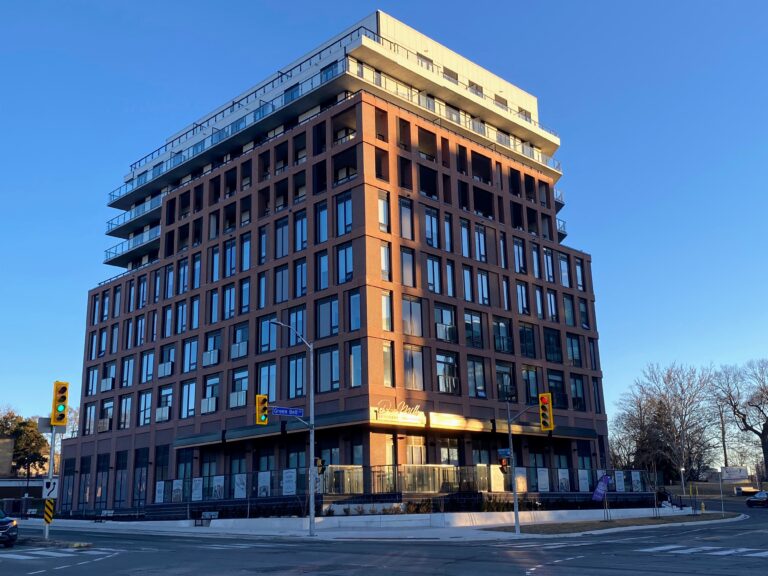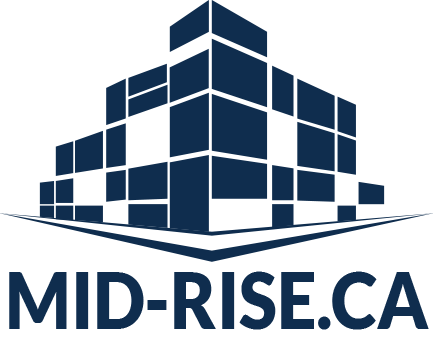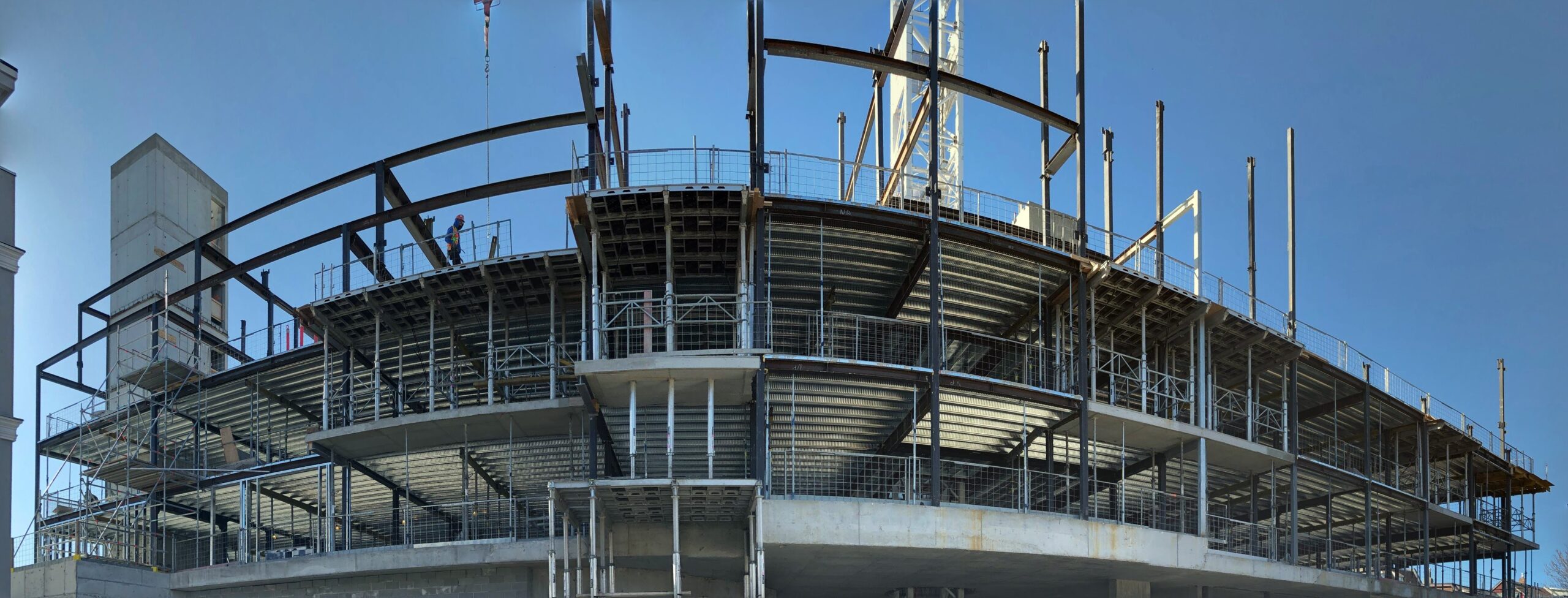A Mid-Rise building is a powerful tool in revitalizing and intensifying an already established neighbourhood without overwhelming the existing infrastructure and taking away from the character of a community. These buildings play a crucial role in meeting the increasing demand for housing in a growing city. Compared to the traditional alternatives of expanding the communities and taking over farmlands to create new low-rise subdivisions, Mid-Rise buildings have significantly fewer environmental effects.

The definition of Mid-Rise buildings will vary from one municipality to the other, but there are several constants in all of these definitions.
- Mid-Rise buildings typically have a minimum of 4 storeys. Their maximum height is a function of many variables but is usually around 10-12 storeys. There are many things to consider when it comes to establishing the height of a mid-rise building, but the width of the ROW (Right of Way) on the street or avenue that fronts each property has the most significant effect. The wider the road, the taller the potential building can be.
- Mid-Rise buildings are designed to blend into and strengthen the existing well-established neighbourhoods. Having a vibrant space on the ground floor, building setbacks, step-backs on top floors, and angular planes are some of the tools that help mitigate the potential negative impacts of the new development on the character of the existing area.
- Most Mid-Rise buildings incorporate a retail or commercial space on their ground floor, which extends an existing norm in most older neighbourhoods. These commercial spaces provide opportunities for new businesses and community amenities.
- Considering that these buildings are primarily located in the older parts of the City, they have access to already established transportation methods which means that the residents of such buildings don’t necessarily have to rely on their vehicles. This reduces the need for parking spaces in these buildings and creates a more efficient building design.
- From a technical perspective, Engineers and Architects design Mid-Rise buildings to have a minimal negative impact on the existing infrastructure in the area. From stormwater management systems to impact on sanitary and use of greywater systems, these buildings, although relatively small, are typically technically complex in design.
- They provide a new option for people who would like to transition and downsize from a low-rise house to a smaller place without moving too far away from the neighbourhood they’ve lived in and love. Mid-Rise buildings offer the empty-nesters the benefits of living in a modern building without losing the connections they have to their community.
- The frontage and streetscape of these Mid-Rise buildings are designed to blend seamlessly with the existing urban elements and improve the living experience for people living in them and pedestrians walking past these buildings. These design elements include the texture and the material used in the façade of the new building, accessibility, entrances, signage, tree lines, planters, and green spaces.
From a developer or an investor’s point of view,
Mid-Rise projects are an excellent opportunity to take on more significant projects than custom homes or townhouses.
On the other hand, the very features discussed above place several constraints on the design aspect of the project and can cause a lot of inefficiencies both in construction and use of the final building. Like any other complex project, an experienced team of architects, engineers, and construction managers can help mitigate most of these inefficiencies.



